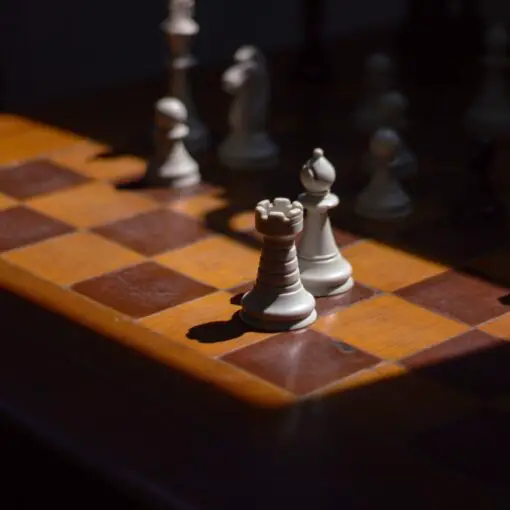One of the greatest challenges our education system faces today is that it remains built atop the rock solid foundations, methodologies, and strategies for learning that were established more than 100 years ago.
Today’s schools are filled top to bottom with rote learning lessons, lectures and resources focused almost exclusively on helping kids remember what they need to know before an upcoming test – just so that they can empty their heads completely and fill the space with info for the next test!
Instead of developing a new generation of leaders, innovators, and creative problem solvers this system produces students that have finally developed memorization skills while lacking in critical thinking, analysis, creativity, and good old-fashioned curiosity.
Encouraging students to develop their lateral thinking muscles, though, has the potential to turn the tide.
The What and Why Behind Lateral Thinking for Students
Lateral thinking, a term coined by creativity expert Edward de Bono back in 1968, is an architecture of thinking that simplifies (and codifies) creative problem-solving.
Instead of focusing on memorization, rote learning, and a rigid approach to learning lateral thinking instead is a free-form, free-flowing approach with hidden structure running underneath the surface.
To put it simply, lateral thinking is designed to help students – help anyone, really – tackle challenging problems with more creativity and imagination. This often leads to be breakthroughs, innovation, and real progress.
It’s important to remember that while we want to teach students how to do well in class we are really trying to prepare them to excel out there in the real world where things are a lot less rigid and a lot less structured.
Lateral thinking and creative problem-solving complement the more logical and procedural learning skills our students develop, helping them to quickly (and accurately) resolve problems that would have been stiff challenges otherwise.
Four Cornerstones of Lateral Thinking
The most interesting thing about helping students to develop their lateral thinking “muscles” is how easy and challenging it can be at the same time.
On the one hand, students that have felt restricted and restrained in class are going to feel like the floodgates have opened, the rules have been erased, and that they have a whole lot more freedom to approach the obstacles they been bumping up against.
On the other hand, though, this free reign can become destructive and distracting. Sometimes lateral thinking exercises become time wasters, especially if they aren’t done intentionally or with a focused outcome.
This is why it’s so important to instill the four cornerstones of lateral thinking into students when they are feeling their way through this problem-solving approach.
Awareness
Awareness is essential when leveraging the power of creative problem-solving and lateral thinking.
Not only do you need to be aware of the obstacle itself that you’re trying to overcome, but you also have to be aware of the desired outcome you’re looking for – and the awareness of the fact that your brain is going to try and “pattern search” to shortcut the process while slowing down your progress.
Alternatives
Another big piece of the success puzzle with lateral thinking is to embrace the idea of alternative solutions.
With traditional educational strategies and problem-solving approaches we sometimes fall into the idea that there is one correct answer to hunt down. This may be true – and you may come across that answer pretty quickly – but there is a lot of power in searching for another right answer after setting the first one you’ve come across aside.
Alteration
Lateral thinking requires you to be quite malleable with the “boots on the ground reality” of the obstacle you’re looking to resolve.
Inverting the situation, reversing the relationship between different elements of the obstacle, removing or adding new criteria, breaking components of the obstacle down and attacking them individually, and other tools can help lateral thinkers more creatively solve the problems at hand.
Stimulation
We’ve all spent time in a school library and understand that silence and distraction free environments are critical to problem-solving.
Right?
Well, lateral thinking is built on the idea that stimulation – oftentimes random stimulation – has the potential to unlock parts of your problem-solving brain that would have otherwise laid dormant.
The stimulation can break down establish thinking frameworks, can “jolt” creativity to the surface, and can help make new connections between disparate thoughts that might not have connected all on their own.
Lateral Thinking Techniques Students Should Master
While there are an unlimited amount of lateral thinking techniques students should try to master, here are a handful that can help new lateral thinkers hit the ground running:
Replacements
The idea here is to replace different parts of the obstacle or problem you’re looking to solve, sometimes with real “off-the-wall” ideas, sometimes just with a quick reversal of the situation.
This is one of the most powerful lateral thinking techniques students will find very useful not just in their studies, but throughout their lives.
Camera Lens
This technique encourages students to look at a problem through the lens of their own camera. The camera can focus in on certain areas and obscure others, can zoom all the way out to look at a more “big picture” view, and can zoom around 360° at will.
Lateral thinking like this encourages probing the problem for weak spots that might not have been uncovered otherwise.
Challenge
One of the biggest obstacles to lateral thinking are the frameworks for problem-solving that we all have developed (often subconsciously) in the past. These frameworks inform how we go about our day-to-day lives, how we make decisions, and how we interpret new information – even if they aren’t serving us well.
Challenge asks lateral thinkers and students to tear down those frameworks, questioning why they exist in the first place, and seeing if these concepts are built on assumptions that are not helpful or useful in this situation.
Mystery Machine
As powerful a technique as there is in the lateral thinking world, the concept here is to combine two completely unique (and often opposing) ideas or objects to try and find the connection and relationship between them.
The more random the item combination is the better!
Lateral thinkers are going to be challenged to stretch their minds deeper than surface level, really probing to try and come up with connections that can help better understand the obstacle or the problem trying to be resolved.
At the end of the day, lateral thinking has the potential to transform the way that students look not only at their studies but at the world in general.
This is a legitimate superpower, especially when practiced in a sea of students that aren’t being given the gift of lateral thinking themselves!
References
https://www.mycoted.com/Thinkertoys
https://medium.com/be-a-brilliant-writer/how-to-solve-problems-better-thinkertoys-by-michael-michalko-c1cdb6d5f2da
https://bigthink.com/neuropsych/lateral-thinking/





